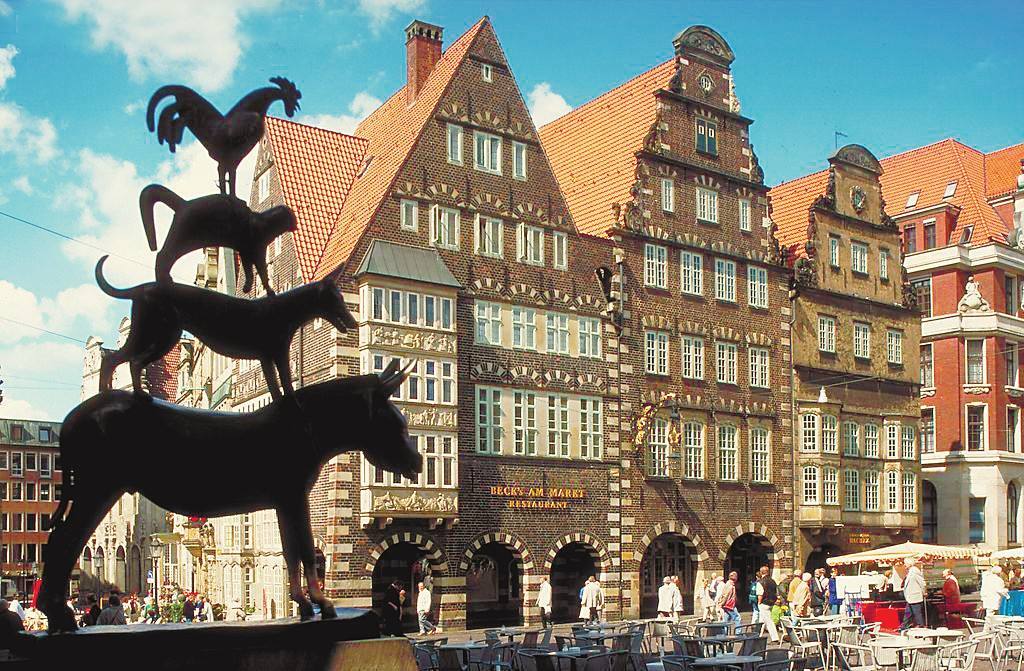5: Germany
5.德國(guó)
Germany will have a projected GDP of $3.71 trillion with a per capita income of $52.683,
德國(guó)預(yù)計(jì),到2050年,其GDP將達(dá)到3.71萬億,人均收入將達(dá)到52.683美元,
making it the largest European economy in 2050 (although it has dropped one place from 2015).
從而成為歐洲最大經(jīng)濟(jì)體(盡管相比于2015年,德國(guó)的名次下降了一位)。
Given that Germany is roughly the same size, in terms of population, as the UK that's pretty impressive.
由于德國(guó)的人口數(shù)量與英國(guó)大致相等,因此這一點(diǎn)令人印象深刻。

4: Japan
4.日本
The size of Japan's economy by GDP will be $6.43 trillion; its income per capita is projected at $63,244.
日本2050年經(jīng)濟(jì)規(guī)模GDP將達(dá)到6.43萬億;人均收入預(yù)估在63244美元。
Japan faces demographic challenges of an ageing population
日本面臨人口老齡化
and a dramatic decline in working age population (of nearly 40 percent).
以及勞動(dòng)力人口急劇下滑的人口挑戰(zhàn)問題(下滑接近40%)。
The shrinking working population is also expected to support an increasing ageing population.
預(yù)計(jì)工作人口的減少也將加劇日益老齡化的人口。
Perhaps incentives will be offered to the Japanese people to have more children:
也許日本會(huì)實(shí)施鼓勵(lì)生育的激勵(lì)措施:
the fertility rate here is the lowest on this list of world economies.
日本的生育率是這個(gè)排行榜上的國(guó)家中最低的一個(gè)。
3: India
3.印度
India will become the third-largest economy in the world,
印度將變成世界第三大經(jīng)濟(jì)體,
with a GDP of $8.17 trillion and an income per capita of $5,060.
GDP將達(dá)到8.17萬億,人均收入5060美元。
India's working population is set to explode, fuelling its growth.
印度的勞動(dòng)人口將激增,從而推動(dòng)其經(jīng)濟(jì)增長(zhǎng)。
Its income growth rate is set to overtake China's after 2030
2030年后,印度的收入增長(zhǎng)率將超過中國(guó),
partly as a result of China's one-child policy,
部分是由于中國(guó)的一孩政策,
and its economy is projected to grow at an average 5.1% annually between 2040 and 2050.
而且印度的經(jīng)濟(jì)增長(zhǎng)率在2040-2050年之間預(yù)估會(huì)達(dá)到年均5.1%。
In addition to becoming one of the world's super-economies,
除了會(huì)成為世界超級(jí)經(jīng)濟(jì)體之一,
India is also poised to become the most populous country on earth by 2050,
到2050年,印度也會(huì)做好成為地球人口最多國(guó)家的準(zhǔn)備,
overtaking China with a projected 1.6 billion people.
超過預(yù)計(jì)人口會(huì)達(dá)到16億的中國(guó)。
2: United States
2.美國(guó)
The US will be the second richest economy in the world in 2050,
2050年美國(guó)會(huì)成為世界第二富有的國(guó)家,
with a GDP of $22.27 trillion and a per capita income of $55,134.
GDP將達(dá)到22.27萬億,人均收入達(dá)到55134美元。
The projected growth per capita income for the US is lower than other developed economies
美國(guó)的預(yù)估人均收入會(huì)低于其他發(fā)達(dá)國(guó)家,
because its already rich infrastructure "constrains growth”.
因?yàn)樗揪秃茇S富的基礎(chǔ)設(shè)施限制了“它的發(fā)展”。
For so long the richest country on the planet, the US will have to contend with being 'second best'.
占據(jù)地球最富有的國(guó)家這么久。美國(guó)將不得不和“第二名”抗衡。
1: China
1.中國(guó)
In 2050, China is expected to be the world's richest, and probably the most powerful,
2050年,中國(guó)有望成為世界最富有,也許也是最強(qiáng)大的國(guó)家,
economy, with a GDP of $24.62 trillion and a per capita income of $17,759.
經(jīng)濟(jì)方面,GDP24.62萬億,人均收入17759美元。
China's income per capita will still only be roughly a third of that in the US,
中國(guó)的人均收入將依然保持在美國(guó)的三分之一左右,
so there is room for considerably more growth.
所以還有較大的增長(zhǎng)空間。
However, it will no longer be the most populous country in the world,
然而,中國(guó)將不再是世界上人口最多的國(guó)家,
that can be a plus or minus depending on your own point of view.
它的人口數(shù)量是會(huì)增加還是會(huì)減少,這就要看你是怎么想的了。











